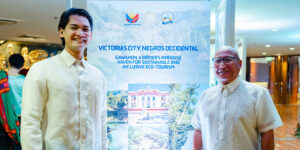
Last week, I featured in this column the recent finding of the Philippines Biodiversity Conservation Foundation Inc. (PhilBio) on the increasing population of the Visayan tarictic hornbill in Negros Island.
This development came after the past five years of annual synchronized hornbill count conducted in the Northern Negros Natural Park, Mount Kanla-on Natural Park, and the Balinsasayao Twin Lakes Natural Park.
Based on the population density, it is estimated that the population of this hornbill is about 3,564 individuals in the three protected areas, as reported by the PhilBio. This is the first site-based count for the species, and it took almost two decades to come out with this updated population data of the Visayan tarictic hornbill. It is interesting to note that this count has almost doubled the estimate of the International Union for the Conservation of Nature, placed at 1,800, covering both Negros and Panay. The IUCN data was still 2001 and based on the analysis of records of the Birdlife International.
The presence of this hornbill clearly indicates the availability of their habitats in the three protected areas where intact forests could still be found, although there are portions of these sites that have already been converted into other purposes.
The increasing population of the threatened species, like the Visayan tarictic hornbill, could be considered as a positive outcome when it comes to conservation of the three protected areas. The hornbills have been known as good indicators of the health of the forests. It means the presence or absence of this species on its known habitats tells the quality of the forests, especially lowland forests that serve as habitats to hornbills.
It should be noted that these sites in Negros, where the hornbills were counted, have management regime in place since they are already declared protected areas. The MKNP has its own legislation as early as in 2001 with the passage of Republic Act 9154, or the Mount Kanla-on Natural Park Act of 2001, while the NNNP and BTLNP have been included in the Expanded National Integrated Protected Areas System Act of 2018, or RA 11038. In effect, the Protected Area Management Board of each site is already operational and serving as the site-based administrative and policy-making body.
But it is also worth noting that each of these protected areas in Negros had and is still employing community-based approaches when it comes to forest protection and biodiversity monitoring. For instance, the Kanla-on Green Brigades in the MKNP are still active since they were organized when I was still the park superintendent of the area, way back in 1995-2002. Some present KGB members were still kids when I was in the MKNP and they continue the task, which their fathers started. A number of original and new KGB members are not only involved in forest protection, but they also participated in the hornbill count and biodiversity monitoring.
The hornbill count was specifically conducted at the Gawahon Ecopark in Victorias City, which is still part of the NNNP. Just like MKNP, the communities are also active in forest protection, especially when they learned the rediscovery of the critically endangered Rufous-headed hornbill in the area. This species was thought to be extinct in Negros until it was rediscovered at the Victorias side of the NNNP. The Rufous-headed and Visayan tarictic hornbills are known to occur only in Negros and Panay. The local government of Victorias is also supporting the protection activities in the area, including the livelihood for communities.
The same story in the BTLNP on community participation in protected area management. A local PO has been organized in the area and one of its regular activities is forest patrolling and monitoring. As an incentive, the park management has provided an opportunity for the PO to manage the ecotourism activities in the BTLNP, as well as some livelihood projects.
It has been said quite a long time that community participation is crucial if we want to achieve conservation milestones. On my personal experiences, it is necessary to create a strong sense of ownership among communities of the protected area where they belong. It entails a lot of awareness, education, and capacity building, and they should be complemented with necessary support, especially sustainable livelihood. The participation of communities in decision-making is also important, as they would own any action that should be undertaken in terms of conservation.*







